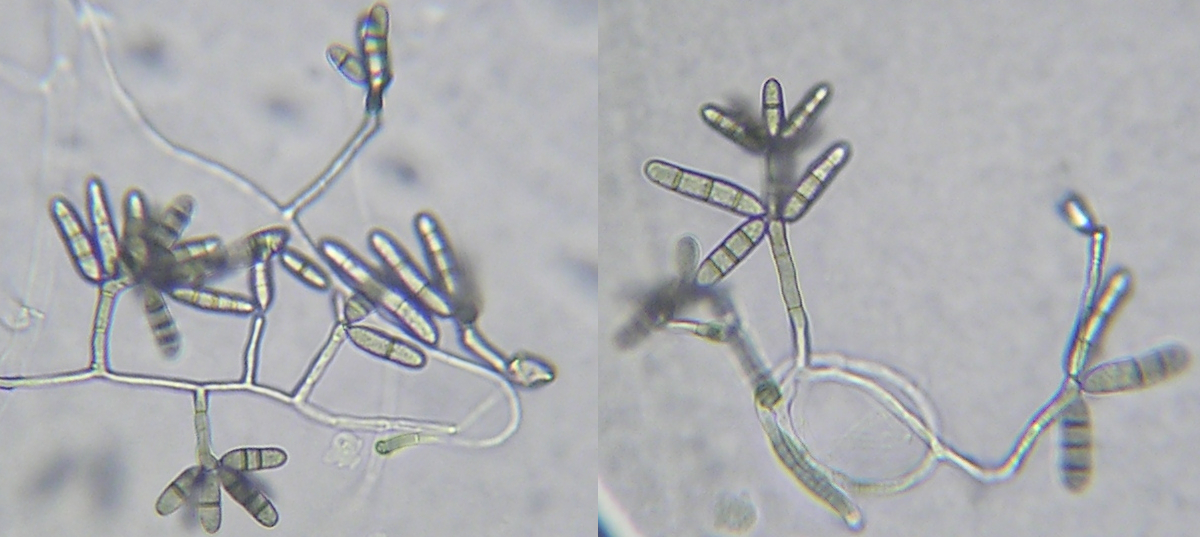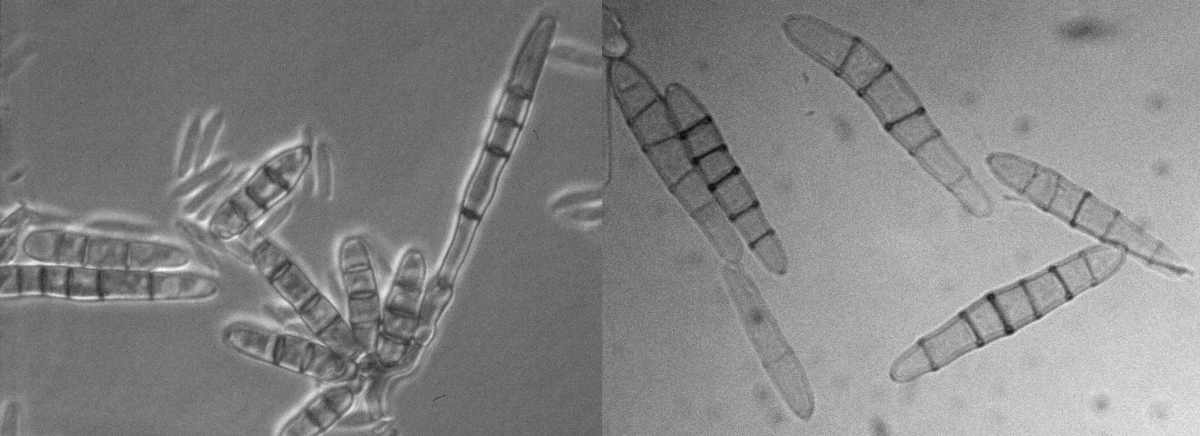Main page <> index of descriptions <> Previous description <> Paradendryphiella <> Next description
Paradendryphiella


Paradendryphiella species are not among the most frequently encountered fungi, but any isolations from ocean beaches will turn them up in abundance. Two species are known in this habitat, P. arenariae, top pair, and P. salina, bottom pair. Both are common but often not overlapping in their ranges, with P. salina found in cool climates and P. arenariae in warmer ones. However, the photos here of P. arenaria were made from material growing on seaweed wrack on a beach in Little Lepreau, New Brunswick, well up the coast of the Bay of Fundy. Species of Paradendryphiella are recognized by their sympodially developing conidiogenous cells producing dark poroconidia with several transverse septa.
Mycologists had long debated whether the two marine species belong in the genus Dendryphiella or Scolecobasidium. The two genera are very similar morphologically, so the distinction really boils down to some very obscure features. Dela Cruz et al (2006) and later Woudenberg et al. (2013) demonstrated that in fact neither genus is appropriate. Woudenberg et al. (2013) described the new genus Paradendryphiella to accommodate both of the marine species.
Habitat: decaying stems and marine algae.
Classification: Pleosporaceae (Pleosporales). Holomorphs unknown. Refs.: Kohlmeyer and Volkmann-Kohlmeyer, 1991 (for marine species), Ellis, 1976 (as species of Scolecobasidium).